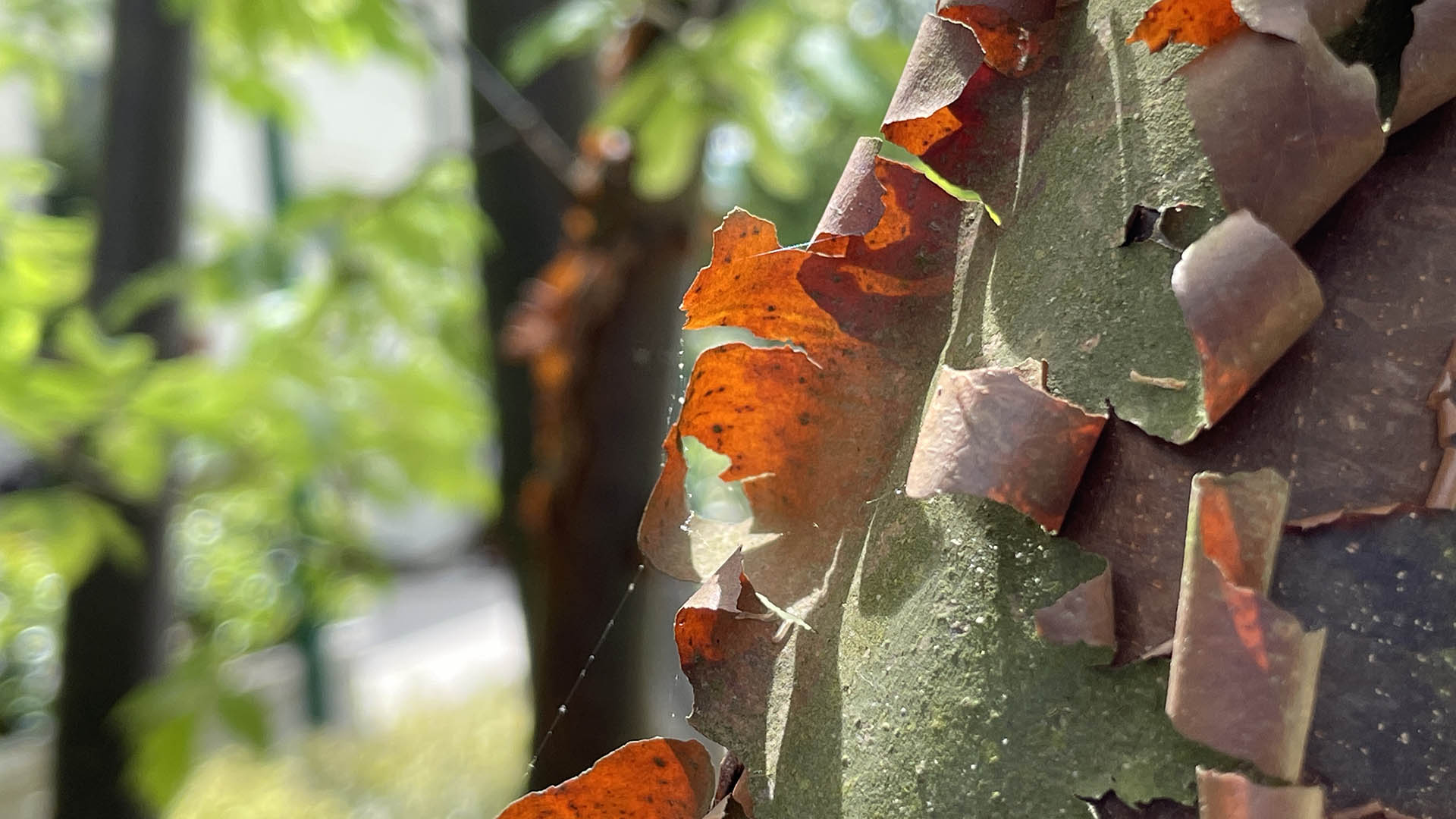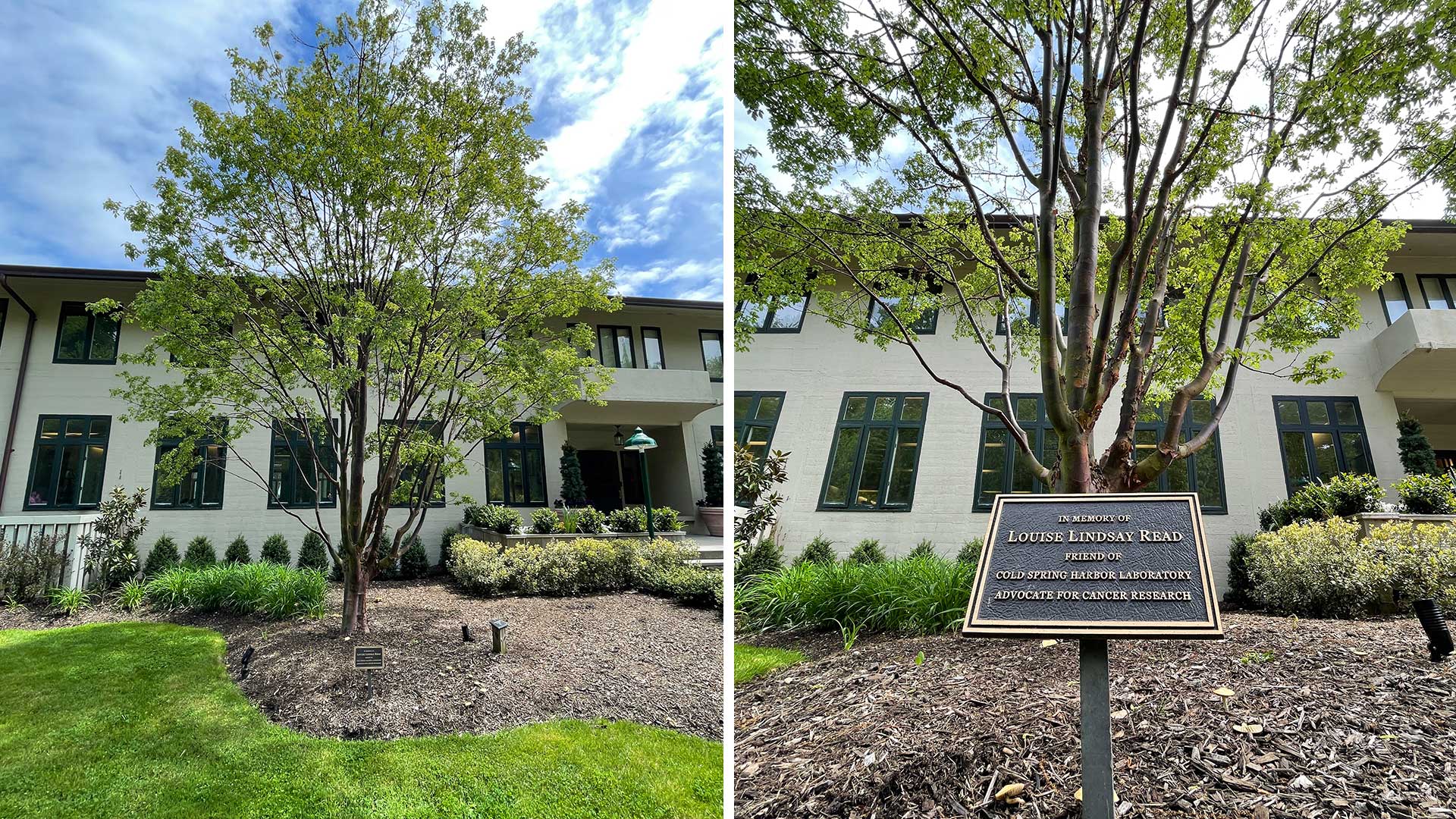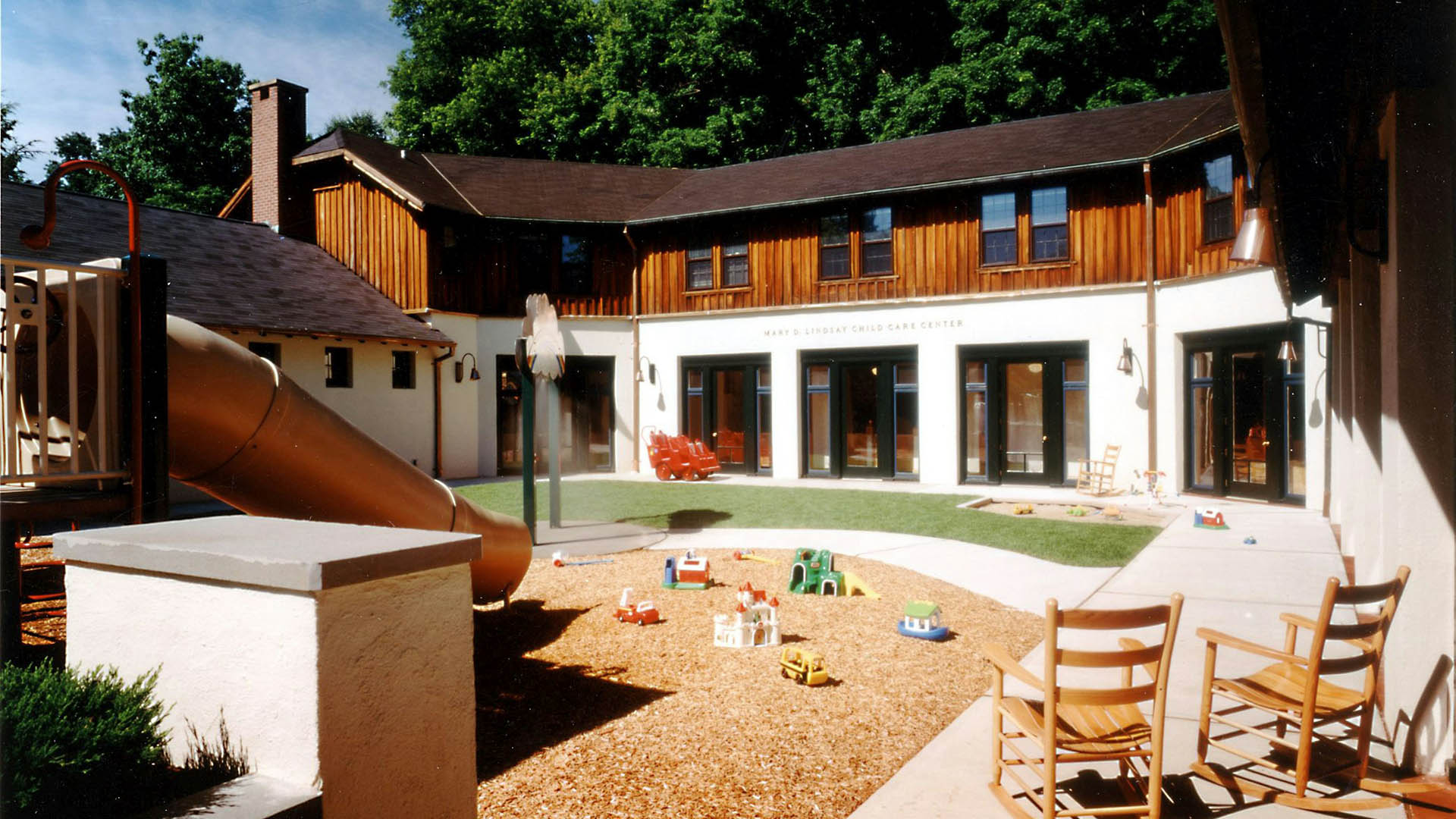“It’s a beautiful specimen,” says Amanda DeDonato, former CSHL horticulturist. “The tree was originally planted by CSHL’s Richards building. When we were designing the new landscape for the front of Blackford Hall, we decided it would be a perfect fit.”

At the base of the tree stands a plaque. The engraved message reads: “In memory of Louise Lindsay Read, Friend of Cold Spring Harbor Laboratory, Advocate for Cancer Research.” Read was also a dedicated nurse. Her 35-year career in the profession continued a Lindsay family tradition of healthcare service that had begun with her mother, Mary, in 1945. Sadly, Louise Read passed away in 2008 after a long battle with lung cancer. Soon thereafter, her mother and her cousin, Robert D. Lindsay—both longtime CSHL Trustees—rededicated the maple in Louise’s honor. Much like the tree, their family’s roots run deep at CSHL.
Robert D. Lindsay was elected to the CSHL Board of Trustees in 1999, continuing the legacy of his father, Robert V. Lindsay. The elder Lindsay had served as the treasurer and vice president of the Cold Spring Harbor Laboratory Association and was a founding board member of modern-day CSHL. Today, his son is the vice chair of the CSHL Board of Trustees. Robert D. Lindsay and his wife also support CSHL’s Ph.D. students through the Robert and Teresa Lindsay Fellowship. Three Lindsay Fellows graduated with the CSHL School of Biological Sciences class of 2024.

Robert D. Lindsey’s aunt (and Louise’s mother), Mary D. Lindsay, was a tireless advocate for cancer research, women’s health, childcare, and family planning. Her longtime association with the Laboratory began when she joined the Board of Directors in 1971. She would go on to win a Double Helix Medal in 2012 for her advocacy and support of CSHL. But perhaps her most lasting impact at CSHL is the campus daycare center that bears her name. Following a determined campaign led by Mary and fellow Trustee Wendy Vander Poel Russell, the Mary D. Lindsay Childcare Center opened for use in 1997.
“It was terribly important that we provide this service for the young scientists,” Vander Poel Russell said at the building’s dedication ceremony. “Their children must be well cared for as they come to work on the cutting edge of science in the laboratories at Cold Spring Harbor.”

Since 1890, a broad intellectual family tree has grown along CSHL’s sandy shores. Each branch represents one of the thousands of researchers who have come here to work and learn. Many branches intertwine and connect. Some scientists who meet at CSHL engage in long-term collaborations that aid one another’s respective careers. They go on to train other researchers, sprouting new ideas. Some visiting scientists decide to take root at CSHL. Others go on to prestigious faculty positions elsewhere. The tree that grows at Cold Spring Harbor has planted seeds around the world. Together, they comprise a vibrant international community that is as much a part of CSHL’s legacy as all of the institution’s groundbreaking discoveries combined.

